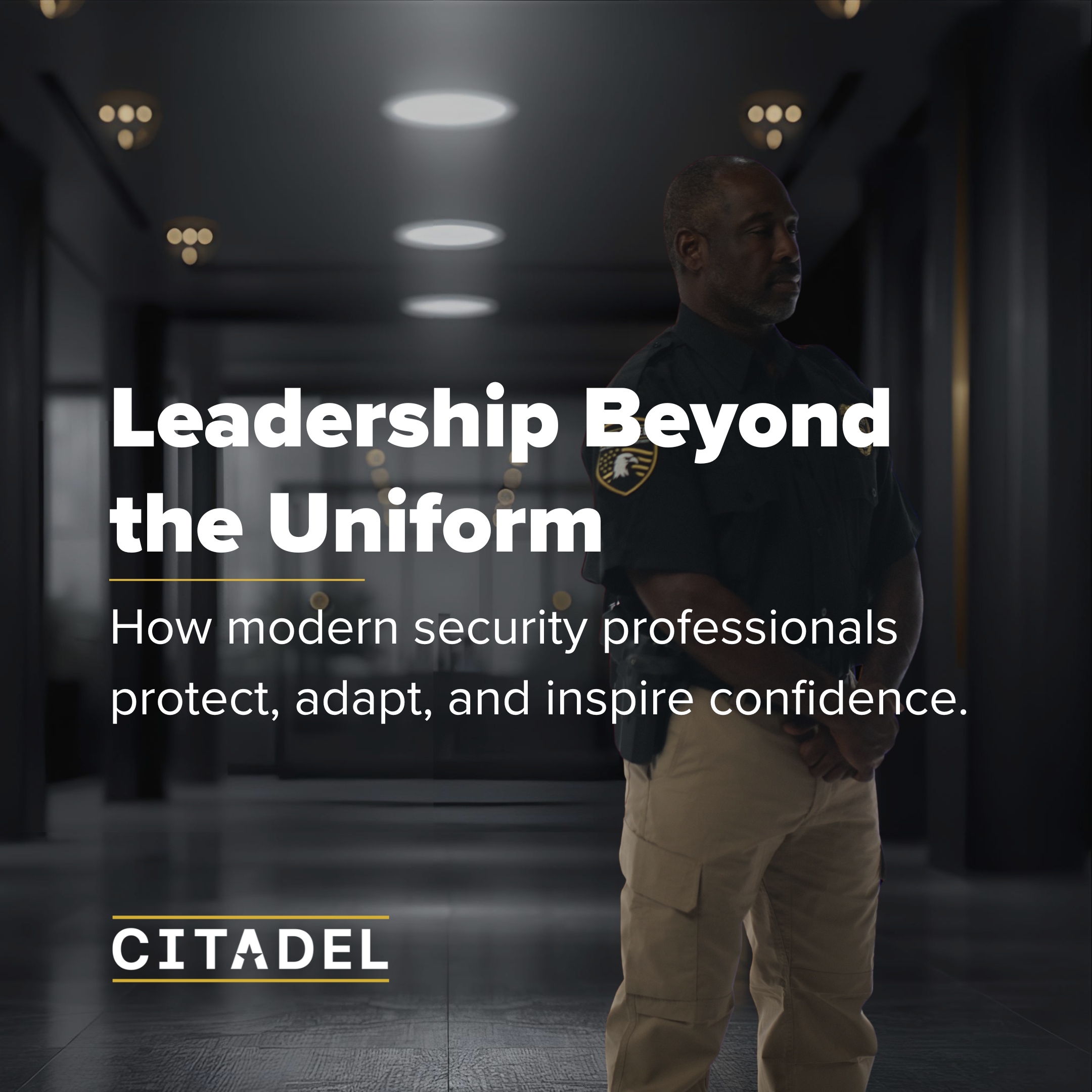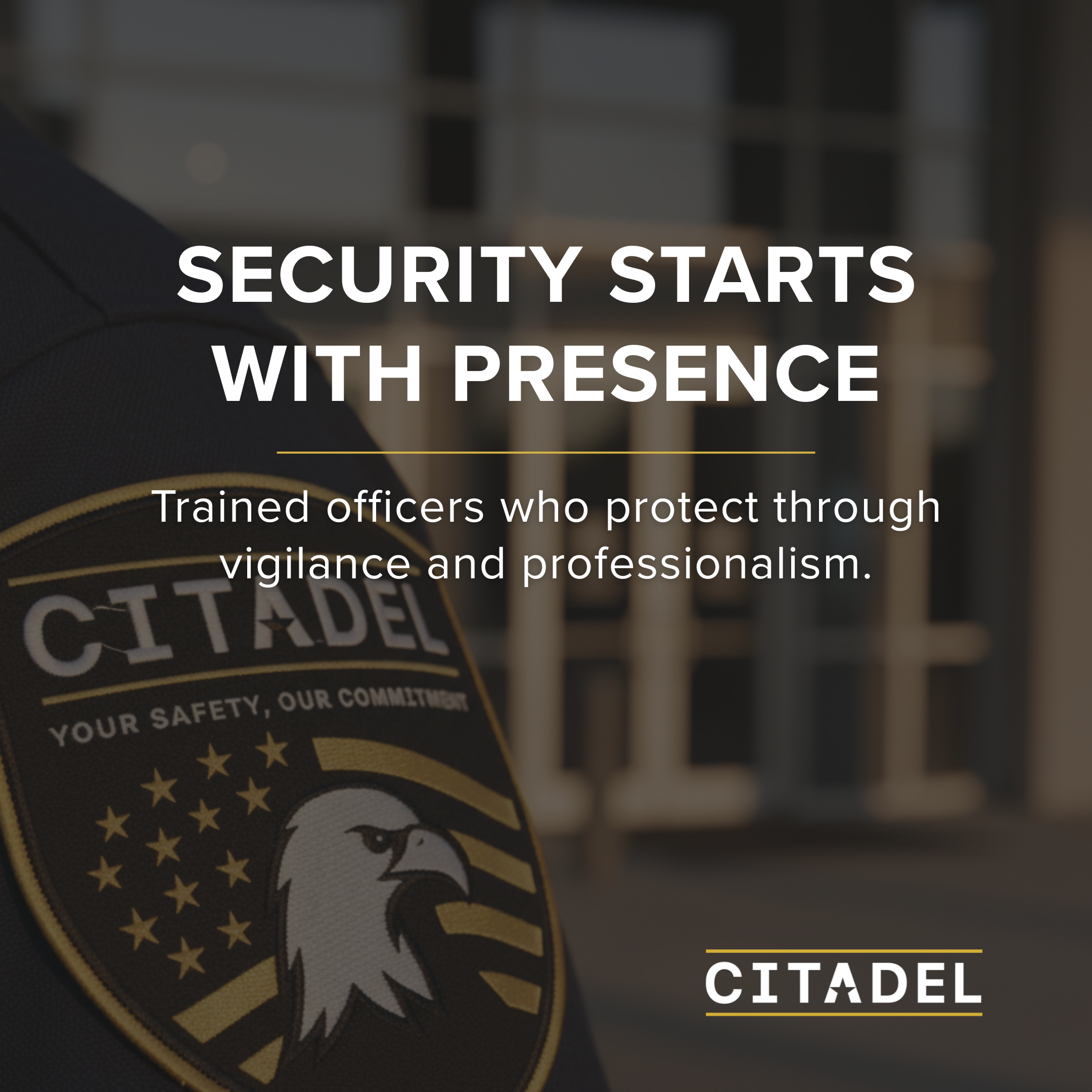The New Standard of Security Leadership
By Team Citadel on Nov 4, 2025

Security has always been about protection — of people, property, and reputation. But in today’s complex environments, true security leadership demands more than vigilance. It requires adaptability, foresight, and the ability to integrate seamlessly into an organization’s operations.
The modern security officer isn’t just a guard on duty. They’re a trusted partner — one who understands risk, reads the environment, and helps clients maintain safety without disruption.
From Presence to Partnership
For decades, the security industry defined success by visibility. A uniformed presence was considered enough to deter risk. But visibility alone no longer guarantees safety.
Today, clients expect more than watchful eyes — they expect judgment, communication, and collaboration. Security officers are now part of the broader operational framework, working alongside facility managers, property leaders, and emergency response teams to keep environments running smoothly and safely.
True leadership means being proactive: identifying vulnerabilities before they escalate, offering solutions instead of observations, and helping clients meet both safety and service goals.
Adaptability as a Core Competency
Every site operates differently — from a construction zone that shifts daily, to a government building with strict access control, to a live event with fluctuating crowd dynamics. Security leadership is defined by the ability to adapt in real time.
This adaptability extends beyond situational awareness. It includes understanding the people, culture, and mission of each environment. Officers who adjust their approach based on context demonstrate the kind of professional agility that defines modern protection.
Technology as a Leadership Tool
Modern leaders in security leverage technology to strengthen accountability and awareness. Real-time reporting, GPS tracking, and digital patrol management tools have transformed how information flows between officers, supervisors, and clients.
But the best technology in the world still depends on human judgment. Leadership lies in using data not just to record activity, but to interpret it — recognizing patterns, recommending adjustments, and improving outcomes for the client.
The combination of human insight and digital transparency has become the benchmark for dependable, intelligent security operations.
Raising the Bar for Professionalism
Security leadership is also about conduct — the way officers communicate, present themselves, and represent both their employer and the client’s brand.
Professionalism builds trust. It shapes how tenants, visitors, and employees perceive safety and authority. When officers operate with composure, empathy, and consistency, they elevate the entire security experience.
The next generation of security leaders understands that perception and performance go hand in hand. Leadership is not only about protecting spaces — it’s about strengthening the sense of security within them.
As risks evolve, so must the people responsible for mitigating them. The new standard of security leadership blends operational expertise, technological fluency, and emotional intelligence.
It’s no longer enough to stand watch. Leaders anticipate. They adapt. They guide.
Organizations that recognize and invest in this new model of leadership don’t just gain protection — they gain a proactive partner in resilience, continuity, and trust.
Ready for reliable, responsive security that puts community first?
Let’s talk about how Citadel can protect what matters most. Contact us today to get started.
Want to serve with purpose?
Join a team committed to more than security. Explore our career opportunities.
You May Also Like
These Related Stories

What to Look For When Choosing the Right Security Partner

Citadel Joins Folds of Honor to Support the Families of Our Nation’s Heroes

